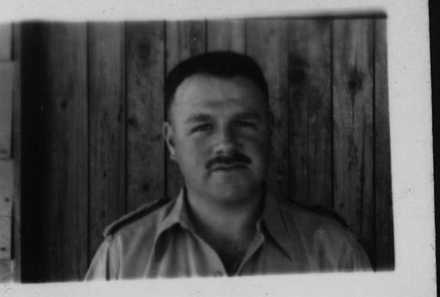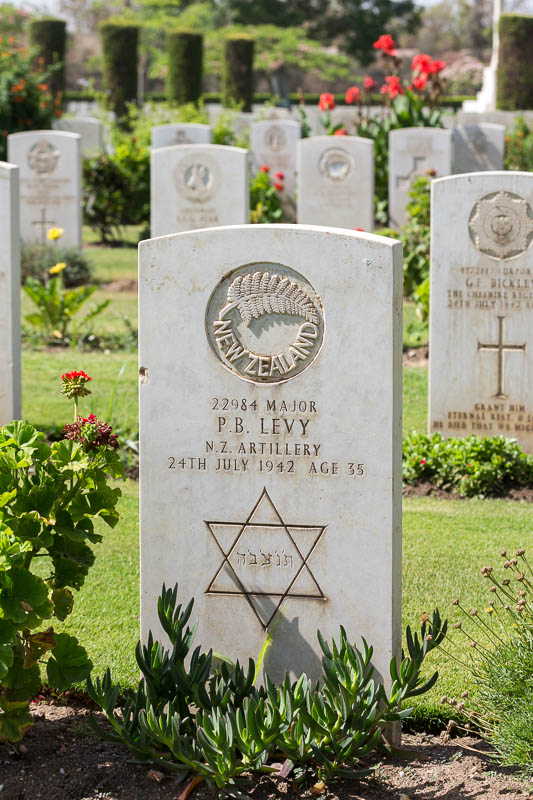 |
| Photo from the Auckland War Memorial online cenotaph. |
Major Philip Braham Levy is a difficult man to pin down online. Nothing but the bare bones of his life can be found, but the Official History of the NZ Artillery on World War 2 contains many references to his exploits in the North African Desert, Greece and Crete. With limited online resources, even my guess of the unit he commanded on the day of his death is nothing more.
It would seem that Major Levy died in the First Battle of El Alamein (1-27 July, 1942). Unfortunately, for such an enterprising member of the Unit, its Official History does not record the action in which he received his fatal wound.
Philip Levy was gazetted as Lieutenant in the NZ Gazette of March, 1940 and was a Captain when in action in Greece the next year. Major Levy is mentioned during the allied advance into Libya in late 1941.
"Major Levy of 31 Anti-Tank Battery had been told by the tank officers that it was impossible to get the guns forward; but he rebelled at the thought of leaving the infantry unsupported. Leading his three troops forward (the fourth, D Troop of 18-pounders, had stayed with brigade headquarters and 19 Battalion at Zaafran) to the head of the column, he reconnoitred the northern edge of Belhamed —almost a cliff face — and found a difficult route. Taking one troop forward at a time, he despatched each gun separately along this and by degrees shepherded all his vehicles through machine-gun and shell fire without loss. It was a masterly performance on Levy's part. A, B and C Troops thus reached 18 Battalion; but the further journey to 20 Battalion on the western end of the feature had to pass ground so open and pitilessly exposed to fire from north and south that it could not be attempted until dusk." - Official History, 2nd NZ Divisional Artillery."
The day of Philip Levy's death was a busy one for his unit, the 4th Field Artillery. They were in the thick of it in the Battle of el Alamein, acting in support of advancing tanks of the British 9th Armoured Brigade which had - with permission of the New Zealanders - painted the NZ divisional sign on their tanks.
The 9th Armoured, supported by the NZ 4th Field Artillery, reached the German lines but at the cost of a 75% casualty rate. It was unable to break through. The threat to German positions in the area was met by the shifting of two panzer divisions - leaving a gap to the southwest of the German position through which General Montgomery poured his armoured forces, breaking through and moving on to support and supply lines.
Levy's Battery, the 31st Anti-Tank, fought through tank, mortar and machine gun fire and suffered heavy casualties also. One of them was Philip Braham Levy.
 |
| Timaru Cemetery. |
 |
| Heliopolis Cemetery, Egypt. New ZealandWar Graves Trust photo. |
Please credit this photograph correctly, to The New Zealand War Graves Trust
ReplyDelete